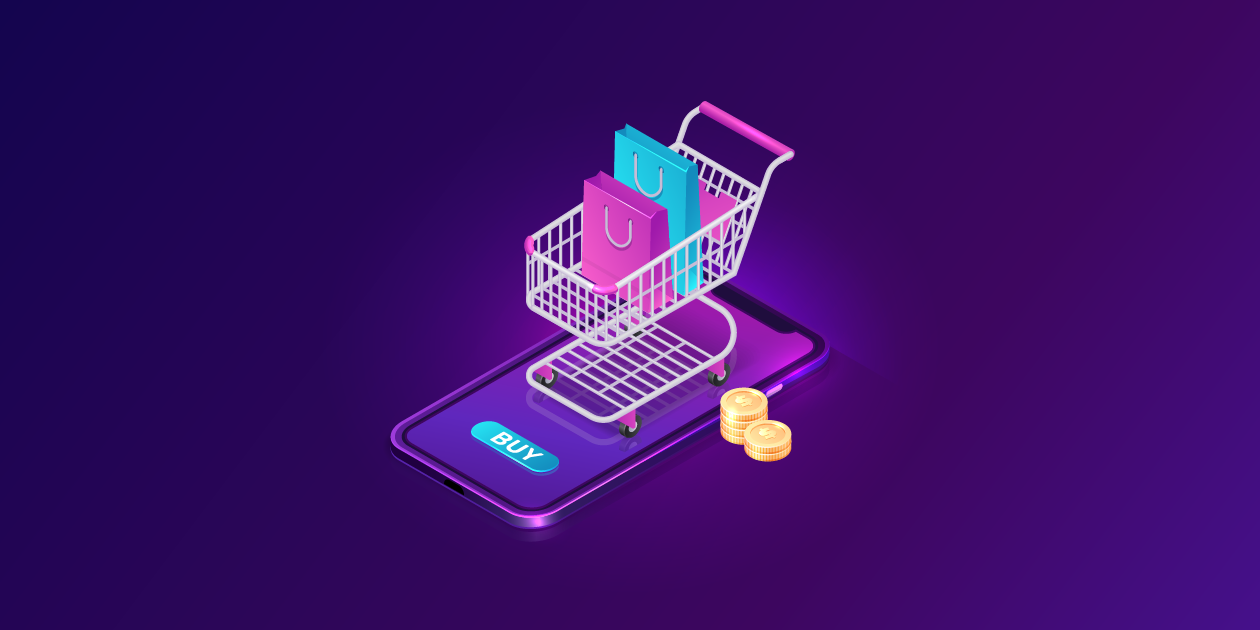Starting an e-commerce store is exciting and challenging at the same time. You’ve researched the available options and chosen a Shopify store to showcase your products.
Maybe you even have a few regular customers, but you want to grow your shop and take it to the next level. Fortunately, there are a lot of things you can do to increase sales.
There are around 5.6 million online retailers in the world and about 1.1 million in the United States. All those companies clamor from dusk to dawn — and late into the night — trying to grab the attention of a limited consumer pool. If you want to stand above the noise, you have to figure out how to capture your target audience and keep their interest.
Here are the best Shopify tips on how to increase sales and grow your platform in the next year. Use a few of them or implement them all for maximum results.
In this article
- 1. Know Your Target Audience
- 2. Add Brick-and-Mortar Locations
- 3. Host a Contest
- 4. Seek Out Lookalikes
- 5. Retarget Browsers
- 6. Work on Customer Retention
- 7. Build Trust
- 8. Embed Videos
- 9. Utilize the Best Shopify Apps
- 10. Leverage Faceted Search to Improve User Experience
- 11. Pay for Ads
- 12. Invest in Influencers
- 13. Work on Your Sales Funnel
- 14. Figure Out Your UVP
- 15. Improve Product Descriptions
- 16. Take Better Photos
- 17. Send Out Abandoned Cart Emails
- 18. Sell More to Regular Customers
- 19. Install Wishlist App
- 20. Engage Site Visitors
- 21. Personalize Offers
- 22. Host an Event
- 23. Go Mobile First
- 24. Start a Customer Loyalty Program
- Get Creative With Boosting Your Shop
1. Know Your Target Audience
You can pay for clicks or post ads on social media, but if you aren’t sure of your exact audience, it may be wasted effort. You identify precisely who your consumers are and create detailed buyer personas. Once you know your typical shopper and their habits, it’s much easier to put yourself in their mindset and advertise on websites they frequent.
2. Add Brick-and-Mortar Locations
Although e-commerce has prospered in the last decade, it is still only about 10% of sales. If you want to reach more customers, you need a brick-and-mortar location. Even if you started online, you could move to an offline location, as many other e-commerce retailers have done in recent years. Amazon now has storefronts where people can go and physically purchase items.
3. Host a Contest
One way to drive traffic to your site is to host a contest. There are many different ways you can reach potential buyers with this method, including embedding the campaign on your website or blog via a contest tool such as Woorise. You can also ask followers to post images of themselves using your product and tag you with a hashtag. This strategy expands your reach on social media and displays your goods to those who may not have heard of you.
4. Seek Out Lookalikes
Facebook offers a feature called “lookalike audience” for targeting segments similar to customers you already serve. If you’ve had a lot of success with other Facebook campaigns, a lookalike audience can help target even more audience members in that persona profile. This social media site is a great place to showcase new or unusual products and introduce people to your Shopify store.
5. Retarget Browsers
When people visit your shop but don’t make a purchase, make it a point to retarget them. If they spent time on your site, added something to the cart but didn’t complete the order, send them an email with an invitation for free shipping or a small discount if they purchase. Retargeted consumers are three times more likely to click an ad than those who’ve had no previous experience with your brand.
6. Work on Customer Retention
When you’re first building your business, your focus is on gaining new customers. However, lifelong patrons are worth far more both in terms of the number of times they re-order and the dollar amount of their purchases. You can increase your revenue by merely focusing efforts on your current consumers and creating a personalized experience for those already on your mailing list.
7. Build Trust
A person visiting your Shopify store for the first time has no reason to trust you with their hard-earned money. You could take their coins and never deliver the goods. You have to show you’re trustworthy. One of the best ways to do this is with clear contact information, badges of any memberships — such as Better Business Bureau or industry organizations — and endorsements from well-respected sites.
You could also accept PayPal payments as an option. Many consumers will take a chance and buy with PayPal because they refund the customer if the seller never delivers the item.
8. Embed Videos
Video marketing has grown in popularity in recent years. Wyzowl’s State of Video Marketing 2019 report surveyed marketers and discovered the average person watches at least 90 minutes of video each day. Video is easy to digest and conveys a stronger message than text alone. One of the most powerful marketing methods you can add to your site this year is videos highlighting products or information on your company. Embed those clips on your Web pages and use them on social media.
9. Utilize the Best Shopify Apps
Shopify features multiple apps you can integrate with your operations. Many of these platforms offer features meant to increase e-commerce sales. Some apps track social proof, automate upsells and offer incentives if people tell their friends about you. Browse through what’s available and automate some of your marketing efforts to boost your Shopify sales figures.
10. Leverage Faceted Search to Improve User Experience
If your online store contains hundreds or thousands of products, especially similar ones (car parts for example), it’s easy for shoppers to get lost and potentially abandon your site. In order to help them find the products they’re looking to buy, it’s important to give shoppers a frame of reference – exactly what you can do with faceted search.
Faceted Search, or Guided Navigation, helps prevent shoppers from getting lost on your site by enabling them to easily filter results to refine their queries. This might seem similar to filters, but they aren’t the same thing.
Faceted Search allows you to create filters based on keywords – ultimately, it enables you to create a structure in which shoppers are presented with a smart, logical interface that makes it easier for them to get to the desired products.
Making the path-to-purchase easier and faster, Faceted Search helps enforce purchase decisions and lower site abandonment rates, leading to higher conversion rates and overall profit.
11. Pay for Ads
Well-known internet guru Neil Patel points out that paying for ads can be effective. However, you should first test your ads with small buys to make sure they’re successful. Paid marketing is available on Google and social media sites such as Facebook. You could also pay for an ad in a newsletter that your niche audience reads.
12. Invest in Influencers
Influencer marketing is still prevalent in 2020, but companies have turned to niche topics and gurus with smaller but more specific followers. Finding the right marketers requires a time investment. Visit your favorite social media sites and see what different influencers post, monitor how their followers interact with those suggestions and develop a smart campaign to pitch to them. Tapping into the right crowd can drive traffic your way.
13. Work on Your Sales Funnel
Consider the process the buyer experiences to get from the landing page to the order form. This path is your buyer’s journey and the way you funnel people from general browsers to more specific offers. Go through your store like you are a customer and look for issues at each point in the funnel. Are you fully answering questions in the first stages? Is your call to action (CTA) direct in the final step? How easy is the checkout process?
Once you have an idea of how well your sales funnel works, look for ways to tweak it and then run some A/B tests to ensure the changes increase conversions.
14. Figure Out Your UVP
What is your unique value proposition (UVP) as a brand? This aspect sets you apart from all your competitors. It might be that you have the fastest and cheapest shipping. Perhaps you carry products no one else does. Your UVP can also be a part of who you are, such as a customer-centered company. Once you understand the advantages of your brand, share that information on your website.
15. Improve Product Descriptions
Your patrons rely on you to adequately describe your merchandise so they’ll know if the item meets their needs. You have to physically describe the goods and include details such as its uses — and even pros and cons. Focus on solutions to any drawbacks. If you aren’t sure how to improve your descriptions, enlist the help of a professional copywriter.
16. Take Better Photos
Online shoppers of your brand only have photos to go on when exploring your offerings. Make sure images are clear and show the entire item from all angles. A 360-degree video isn’t a bad idea, especially for higher-priced goods. Work hard to improve the consistency of your images, too, so everything is obviously from the same business. If someone views it alongside a list of other products, it should look uniform.
17. Send Out Abandoned Cart Emails
Every online store has a certain number of abandoned carts. There are several reasons why someone might not complete the sale. Perhaps they got busy, or maybe they found the item cheaper elsewhere. Whatever the explanation, sending out a series of automated emails when someone approaches a conversion and then bounces away can increase your Shopify sales. This is a good way to improve your conversion rate. You can send an abandoned cart email o an abandoned cart text message. Here you have a list of abandoned cart sms examples you can get inspiration from
18. Sell More to Regular Customers
The customers you have are much more likely to buy from you than new visitors are. They already know they can trust you, and they like your products. One way to increase your profits in the coming year is by offering deals to existing clients. Start by segmenting your audience based on past buying history.
See what new goods match up with what they’ve previously bought. Then, send out an offer to purchase the item, get a discount by a specific date or receive free shipping.
19. Install Wishlist App
There are times when someone loves a product but isn’t quite ready to buy for themselves. Utilizing a wishlist app with your Shopify store comes in handy in these cases. The person merely adds the item to their wishlist. Family and friends then shop off the register for birthday and holiday gifts.
Encourage users to add items, even if it’s only something they are considering buying. They can always remove it later. Remind them from time to time that they can share their desired objects with others.
20. Engage Site Visitors
Look for ways to engage site visitors. You have many ways of doing this, but the more interactive you can make the process, the better. Add a live chat feature, embed a video or link to your social media pages. When people feel connected, they’re likely to stick around and check out your offerings.
21. Personalize Offers
Today’s shopping websites do something pretty high tech. They either use cookies or login information to pull up data on past buying and browsing behavior of consumers. They then use those figures to personalize offers. For example, if a shopper bought a cookie sheet the last time they visited, the system might show them a selection of cookie cutters and rolling pins, along with other baking supplies.
You can even pull up browsing history and show them where they left off. Perhaps someone was searching for a sundress for an upcoming cruise and left your site because of an appointment. Now, they can see which items they were looking at when they left and save precious time.
22. Host an Event
Not all of your growth strategies have to be online. Even if your store is exclusively online, you likely have a local audience. Attend local craft shows or host a workshop for residents in that area. Invite media outlets and take a ton of photos to share on social media. Increasing your coverage means you’ll introduce more people to your brand.
23. Go Mobile First
According to Statista, by the year 2021, about 54% of retail commerce sales will be via mobile devices. Shopify is naturally geared to optimize to different screen sizes, but think of other ways you can tap into the smartphone market.
For example, offer to send out SMS messages when you ship an item or text special offers to your mobile customers. Design with the mobile user in mind and consider what features make shopping more convenient, such as easier checkouts, shorter forms and frequent reminders.
24. Start a Customer Loyalty Program
Online stores sometimes attract new buyers but don’t retain them. Offer a loyalty program and reward those who order multiple times a year. For example, provide a discount after so many orders over a certain dollar amount. You could also send a small gift after each purchase. Reflect on what your typical consumer likes and come up with something that ties in. If you sell bath bombs, you might include a shower steamer with each order over $25.
The brand Yumi, which sells fresh, organic baby food, gives a discount after specific benchmarks — such as order five times and get $5 off. They also have a referral program for those who tell others about their products.
Get Creative With Boosting Your Shop
The ideas above are a great start to growing your Shopify store in the next year. Make a list of the tactics you’ve already tried and which ones you’d like to implement. Think outside the box, study what other e-commerce shop owners do and get creative in your marketing efforts. No energy is wasted when you’re trying to grow your business.
Even if a promotion doesn’t go as planned, you’ll have learned what doesn’t work with your customers. With a bit of effort, your company will grow in the next twelve months.



